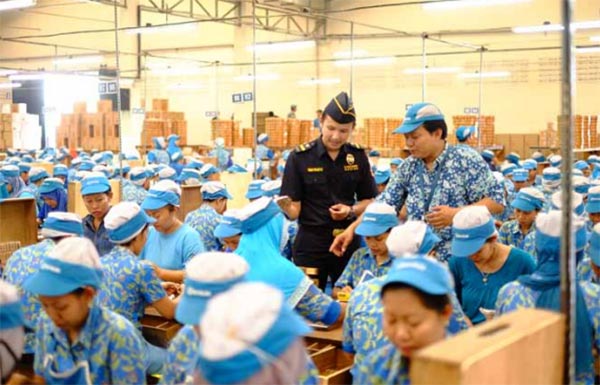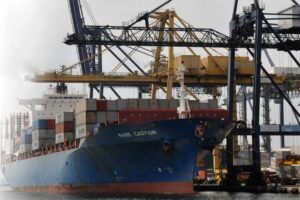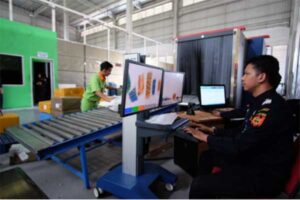
Minister of Finance Indonesia announced the 2017 excise tariff rate for tobacco products. The decision to increase the excise tariff rate was taken after considering aspects of health, employment, illegal tobacco distribution, tobacco farmers, and state revenue.
Excise remains an important instrument of state revenue. For 2017, the revenue target from Excise Tariff for Tobacco Products is 149.8 trillion rupiah, or 10% from the total revenue from tax. Upon conducting studies and calculations, the government is theoretically optimistic that such target would be achieved.
The Ministry of Finance, especially the Directorate General of Customs and Excise (DGCE) as the agency that collects excise and monitor the distribution, has done efforts to help achieve the revenue target, especially when considering that the study from P2EB team from UGM reveals that the problem of illegal tobacco is becoming more prevalent, 12% just last year. DGCE is required to have an effective and optimum control against tobacco product to ensure the success of the new policy on the excise tariff increase.
Synergy among the Customs and Excise Service Offices in Controlling Tobacco Product is Crucial
Director of Enforcement and Investigation (P2) DGCE will optimize control on tobacco product by providing directives to all P2 unit at all customs service offices in Indonesia, especially those in areas that produce tobacco product, to conduct enforcement at the upstream production and seize illegal tobacco-rolling machines.
It is important to build synergy between customs service offices at the area of distribution and those at the area of production, for example by informing offices at the area of production about any distribution of illegal tobacco at the area of distribution.
As control is more intensified, enforcement against violation on excise also increases. In 2016, up to 17 October, there have been 1643 enforcements on excise, 1.6 times as much as those in 2015, which were 1025 enforcements.
There are various modes used by the perpetrators and the distribution patterns are also changing. A lot of seizure comes from containers containing illegal tobacco product, package delivered by truck from Java to Sumatra, or partial delivery by bus and express courier service concealed among other goods.
The area that is vulnerable to excise violation is the production area, such as Central Java and East Java. The illegal tobacco factories are usually set up at rural areas which makes it difficult for us to monitor because they often ask local people to warn them when they see us coming.
As for the distribution area, Harry said that it remains the same as last year, where Sulawesi, Kalimantan, and Sumatera, especially the rural areas, remain the destination areas for distribution, targeting middlelow income smokers. Enforcement at the distribution area has been effective and managed to seize significant amount of illegal tobacco. Hopefully the loss they suffer from the seizure discourages illegal tobacco manufacturers from repeating their violation.
DGCE always strive to eradicate violation on excise by imposing penalties based on the Excise Law. Administrative sanction for improper excise stamping, for example, is 2 to 10 times the value of the excise. Or the crime penalty for violations, such as counterfeit excise stamp, shall be subject to a minimum of 1 year imprisonment. A lot of people think that such penalties are not severe enough to discourage criminals from committing crime on excise.
While the criminals themselves often think that what they are doing is a high risk-high profit business, meaning that although selling illegal tobacco might result in a severe punishment, it might also bring them a lot of profit, especially after the excise tariff increase which makes the price gap between the illegal tobacco and the legal one even wider. They also distribute the illegal tobacco at the rural areas where it is very difficult for DGCE to control. This is the challenge for DGCE to continue working hard to eradicate illegal tobacco, both at the production and distribution area.
Another challenge for DGCE is in the form of resistance from the local people. Almost in every enforcement related to excise of alcoholic beverages, we face resistance from the local people because the factories are their source of employment. But we can manage this by strengthening our synergy with other law enforcement agencies.
In 2017 DGCE will focus on the enforcement at the upstream production and seizure of tobacco-rolling machine, and intensify dissemination to the community, in cooperation with the local government to discuss the synergy in dealing with illegal tobacco.
Customs and excise service offices have also been active in conducting disseminations through their information service units by coordinating with the local government, local media, or by displaying banners in public places to support the anti-illegal tobacco campaign.
In addition to supervising, the Director of Enforcement and Investigation unit also supports the performance of the service offices by formulating policies and regulations concerning service and control for tobacco product. The Director of Enforcement and Investigation unit also supports efforts done by excise-related units, such as the Directorate of Excise, Directorate of International and Public Affairs, and other excise-related units at the customs and excise service offices.
the Customs and Excise Service Offices in Controlling Tobacco Product – Temporaktif






